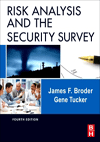It Starts With You: How to Mitigate Risks From the C-Suite

Photo by Rebrand Cities from Pexels
Top-down management is one of the most common management styles organizations take. And, it’s an approach that can help mitigate risks in your company.
Forrester Consulting, a business and technology consulting firm, has covered this concept extensively. According to a 2021 report, 31 percent of executive management — out of a pool of 236 survey responses — said proactively managing critical events is a key goal.
Here’s how you can act to prevent reactive strategies, new risks, stifled progress and more.
Be Proactive, Not Reactive
“Cross that bridge when you get there,” although a wonderful idiom for living life, is not a sound method of thinking for your company’s risk management plan. A reactive plan — acting in-the-moment and on-the-fly — can lead to intensified problems in the future, with more frequent disaster events. Only 31 percent of risk and security executives say that a key goal in the company is becoming more proactive in their critical event management plan. A lack of understanding and prioritization from the top has present and future consequences.
Acting proactively allows all members of the company to make better, quicker, more effective decisions when faced with a risk. Additionally, it helps with technology and resource investments.
Understand Your Company’s Risks
Risk management is crucial in organizational resilience. However, many organizations find themselves unprepared to respond. And, with the chance of risk higher than before thanks to remote work, natural disasters and cloud architecture. That risk, however, is only set to rise: 48 percent of security executives say risk management will be more complex two years from now. Fifty-seven percent of risk and security executives say that their organization does not proactively mitigate risk. This could mean there are gaps in your risk preparedness plan.
With incidents varied, universal and inevitable, it’s important to know your risks and put plans in place to mitigate them.
Prevent Stifled Progress With Proper Risk Management
A poor response to a critical event can lead to a tarnished reputation and lower employee morale. Sixty-one percent of risk and security executives say that the pandemic — a large disruption in business organization for many companies — negatively affected their company’s reputation; around half say the same about shooter or terrorist incidents. Improved employee confidence and morale, reduced negative impact on operations and stronger reputation are just a few benefits of effective critical event management.
Respond Holistically to Critical Events
Having an interconnected plan allows for a holistic response to a critical event. Risks can impact horizontally in the company, meaning a silo-ed approach will not lead to proper risk mitigation. 18 percent of security and risk executives say their organization uses enterprise risk management to manage critical events. Hiring business continuity or information security can help manage critical events, but proper technology is needed as well.
In fact, some technology lacks key components that can affect ROI. More than half of security and risk executives say their organization lacks incident management technology, technology for risk, governance and compliance and technology for supplier risk and management. Proactivity can’t happen if the technology to identify and prepare for incidents is not there.
Looking for a reprint of this article?
From high-res PDFs to custom plaques, order your copy today!





-(1).jpg?height=200&t=1639404922&width=200)



